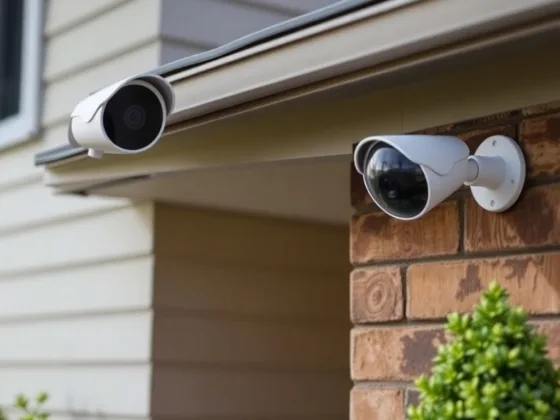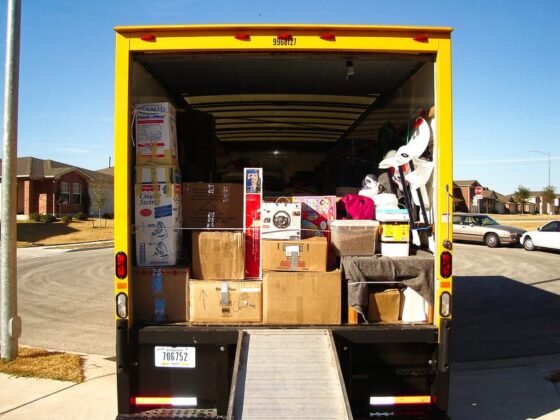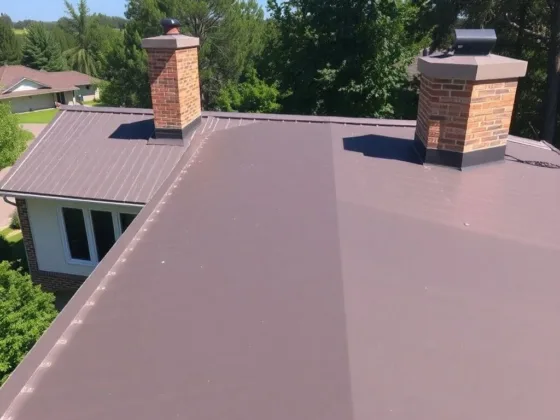Table of Contents Show
The foundation is one of the most important components of your home. If it starts to have problems, it can affect the entire house.
Foundation issues can happen as a result of drought, poor construction, bad drainage, or intruding tree roots. Regardless of the cause, the longer you wait to address the issue, the more damage your home will sustain.
Your first line of defense is to educate yourself on the warning signs. This way you can perform regular checks and get a professional involved if you notice anything out of the ordinary.
To help you out, we’re going over five common warnings signs of foundation problems.

Read Also:
1. Cracks on the Exterior and Interior
One of the most common signs your foundation is in trouble is cracking. This can happen on the inside and outside your home.
Look for cracks in walls above door frames and under window sills inside your home. This is an indication the foundation has shifted or that moisture is getting in. If you believe water is the culprit, place sealant in the cracks as a temporary solution.
Tiny cracks in walkways, retaining walls, or steps leading up to your home are common and shouldn’t cause alarm. However, if you notice thick cracks forming, you likely have a foundation issue.
These exterior cracks happen when the soil under your property shifts. You may even notice cracks on your driveway or garage floor. This is a sign of a serious foundation issue.
When trying to estimate the extent of the problem, a good rule of thumb is to look at the length and thickness of the cracks. The bigger the crack, the worse your foundation issue is.
Furthermore, if you notice the cracks getting larger in a short amount of time, you need to call a professional right away.
2. Windows and Doors That Stick
Have you noticed some doors and windows in your home are hard to open and close? This probably isn’t a case of your house settling. It’s most likely a problem with your foundation.
A door may start to catch on the doorframe, making it harder to open and close. It could also start scraping against the ground. Windows may also become stuck, making them difficult or impossible to open.
This usually occurs for one of two reasons. You may have excess moisture coming in from the outside and warping the doors and windows. Or, your foundation has shifted, throwing your windows and doors out of alignment.
Examine your sticking doors and see if they look crooked in proportion to the doorframe. As far as windows go, they may not seem like they fit into the frame anymore.
These are frustrating issues that won’t self-correct. You need to find professional foundation repair to come out and make a diagnosis.
3. Floors Seem Uneven
If specific sections of your flooring seem uneven when compared to other areas, there’s a good chance your foundation has a big problem. This is a sign your home is dipping lower on one side.
You’ll most likely first notice this issue while walking on uneven floors. They tend to squeak once they start to sag or bow. You’ll also feel them give a little when you step on them.
This problem can happen with pier and beam foundations or concrete slabs. However, pier and beam homes tend to cause sagging floors once the foundation becomes uneven.
If you have tile, you may not notice your floor is uneven. Unfortunately, tiles can end up cracking and breaking due to the pressure caused by the imbalance.
It’s important to address this issue right away. Uneven floors can be a safety hazard, especially for children or the elderly.
4. Standing Water in the Basement
If you have a basement, you may be used to seeing excess moisture or standing water after a plumbing issue. However, if you tend to have this problem after it rains, there’s a good chance the problem is your foundation.
This happens when cracks allow water to seep into your basement. That’s why it’s important to ensure the landscaping around your home has proper drainage.
It’s also a good idea to regularly check the condition of your gutters. If they’re broken or full of debris, water will spill over when it rains and flood the base of your home. Over time, this could lead to foundation issues resulting in moisture entering your basement.
Water damage can cause mold, dry rot, and termite infestation. Ignoring the issue will result in additional damage.
A wet basement can create the perfect conditions for bacteria and mold to thrive in, leading to various health hazards. It can also damage priceless family heirlooms and sentimental treasures that can’t be replaced.
You are aware that anytime there’s water in your basement you should be concerned. The problem is you don’t know from how the water is coming into the basement or why this is happening.
If you have a crawl space, check this area for moisture as well. Standing water could indicate a foundation problem. You’ll want to remove as much of this water as possible and call a professional right away.
5. Sinking or Rising Foundation
When the foundation of your home sinks or lifts, you’re going to run into problems. There are a few ways to determine if this is happening.
If your foundation is sinking, you may notice that one side of your home seems slightly lower. However, this can be hard to notice sometimes.
Walk around the perimeter of your home and examine where the foundation meets the soil. You may be able to see where sinking has occurred. This tends to happen if the original foundation wasn’t properly set or if excess flooding has occurred.
When a foundation moves upward, it’s referred to as foundation upheaval. This happens when soil expands or if a plumbing leak causes flooding under your home. Upheaval is more likely to occur if you have clay soil.
Sticking doors and shifting fireplaces are tell-tale signs of foundation upheaval. You’ll need an expert to perform an inspection to determine the best course of action.
Watch Out for These Signs of Foundation Problems
If you suspect your foundation is causing damage to your home, the last thing you want to do is ignore the issue. This type of structural problem doesn’t go away on its own.
If you’re unsure if you have an issue, look for the signs of foundation problems discussed above and make a quick diagnosis.
We hope you found this article helpful. Feel free to check out the rest of our site for more home improvement and DIY tips.









